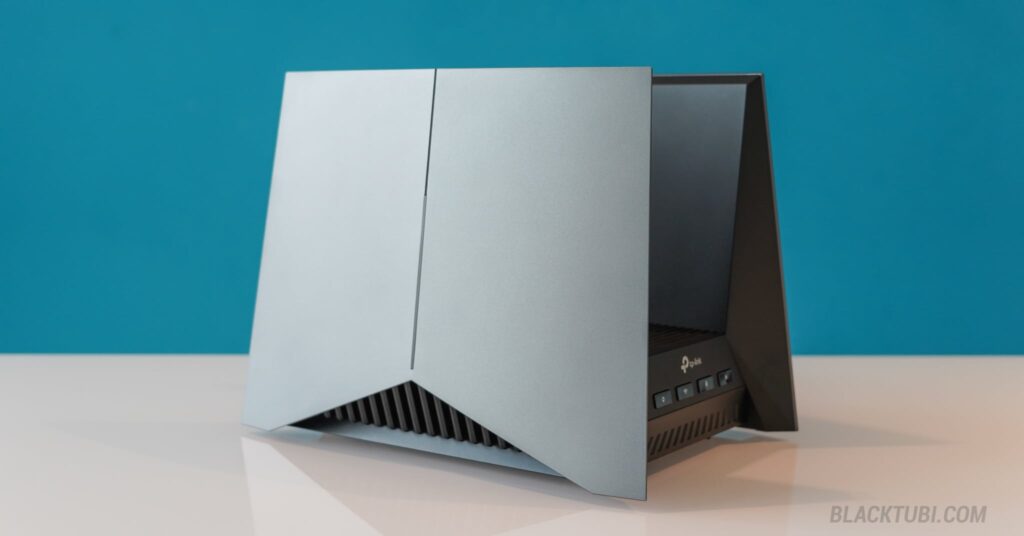
It’s been a while since TP-Link released a new gaming product and the Archer GE800 gaming router is particularly interesting. It comes with the latest Wi-Fi 7 technology supporting BE19000 with the tri-band wireless configuration. TP-Link also revamped the whole software stack with laser focus on accelerating the network for gamers, prioritizing each gaming session.
It only took me a few hours to realize that TP-Link’s new Archer GE800 is better than the previous gaming router released by the company in every way possible. Despite Wi-Fi 7 a new technology, TP-Link has taken aim at ironing out the connectivity issues and software bugs. I’ve tested it for a whole week and the Archer GE800 is consistently reliable even when using my older Wi-Fi 5 devices.
The new design no longer comes with visible individual antenans and that’s a welcoming design change. TP-Link told us that the antennas more sensitive than the past even though they are not visible, in my experience, this made the router perform really well even in challenging environments. The stronger signal is instantly noticeable especially on the 5GHz band if you’re coming from a mid-range router.
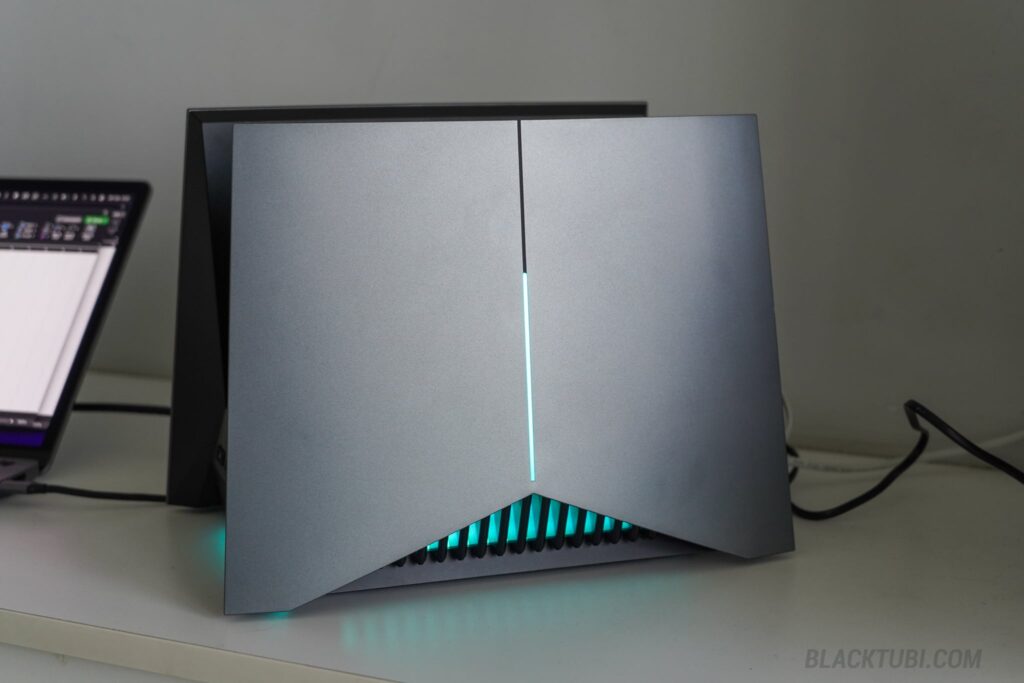
As for the build quality, the Archer GE800 uses high quality plastic material and a premium metallic-esque finishing. It’s also a really heavy product due to the amount of heatsink used to dissipate the heat generated by the high performance CPU and high power Wi-Fi 7 radio. This means the router is really huge with a big footprint that will take up a lot of space.
Of course, a gaming product is not complete without some RGB flair. TP-Link hoped on the band wager and added proper RGB to the Archer GE800. The light is vibrant and they can be customized easily on the TP-Link Tether app. Thankfully, the light can be disabled if you prefer a more discreet and subtle look. Sadly, all the physical LED status indicator and removed so you’ll need to rely on the app for this.
Hardware and Specifications
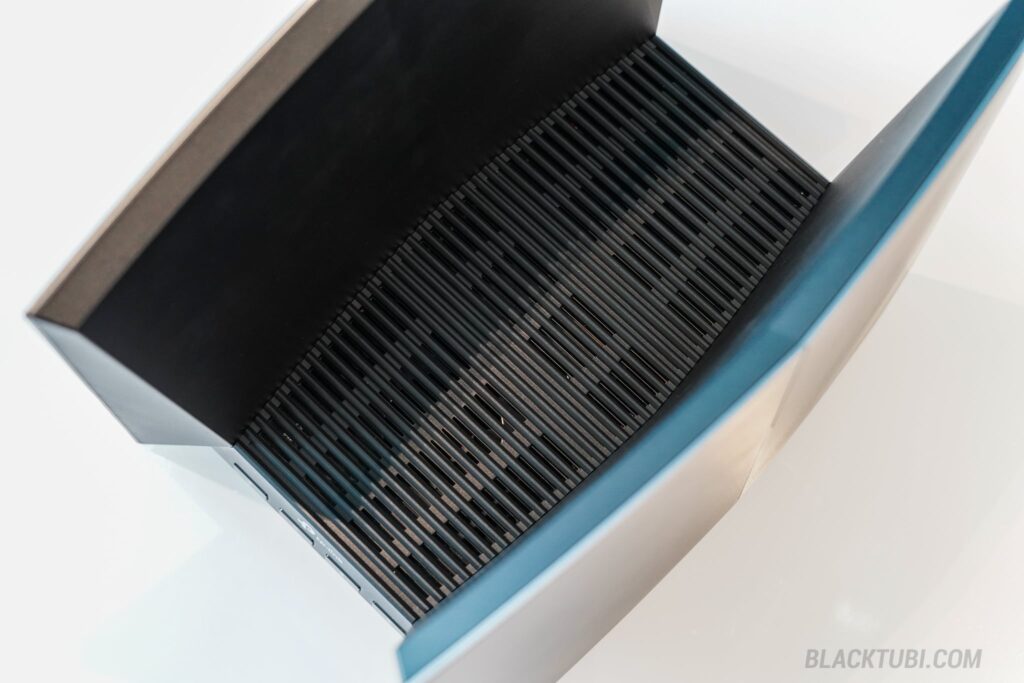
Powering the Archer GE800 is the Qualcomm Network Pro 1220 Platform with a 2.2GHz Quad-Core processor and 2GB RAM. The processor is developed with the advanced ARM A73 architecture which deliver more performance and better efficiency than the older ARM A53 architecture. With this high performance CPU, the router handles many devices on a busy network like a charm without hiccups.
To tame the power of the high performance CPU, the Archer GE800 comes with active cooling fan cleverly placed between the antennas to exhaust the heat. That’s probably why the router feel warm to the touch as all the heat are exhausted here. On the bright side, it means less heat is trapped within the product and this should help to enhance the stability and extend the lifespan of the product.
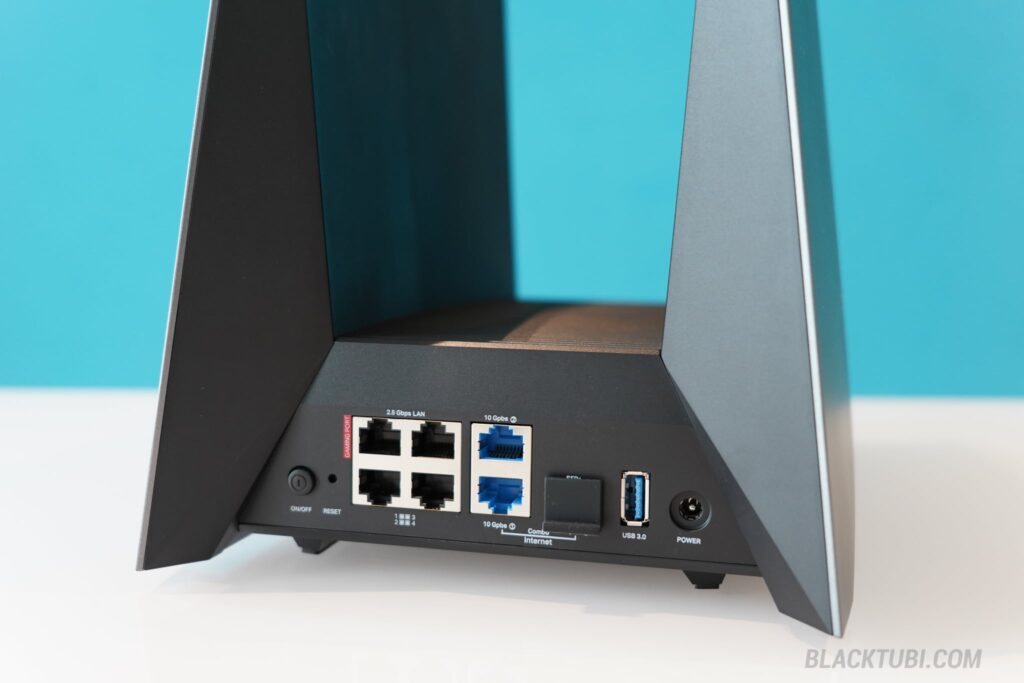
As for the ports, the Archer GE800 comes with dual 10G Ethernet WAN/LAN port and a single SFP+ port. The SFP+ port can be used to connect a fibre SFP+ module which will be great for power users looking for faster performce or bypassing the fibre modem from the ISP. The Archer GE800 is ready to support a 10Gbps Internet connection with the dual 10G Ethernet ports.
The remaining 4 LAN ports support up to 2.5G Ethernet which is 2.5x faster than Gigabit Ethernet. All the Ethernet LAN ports on this router are at least 2.5G capable for a seamless 2Gbps Internet compatibility. There’s also a single USB 3.0 port which can be used for things like USB file sharing over the network.
Wi-Fi Performance
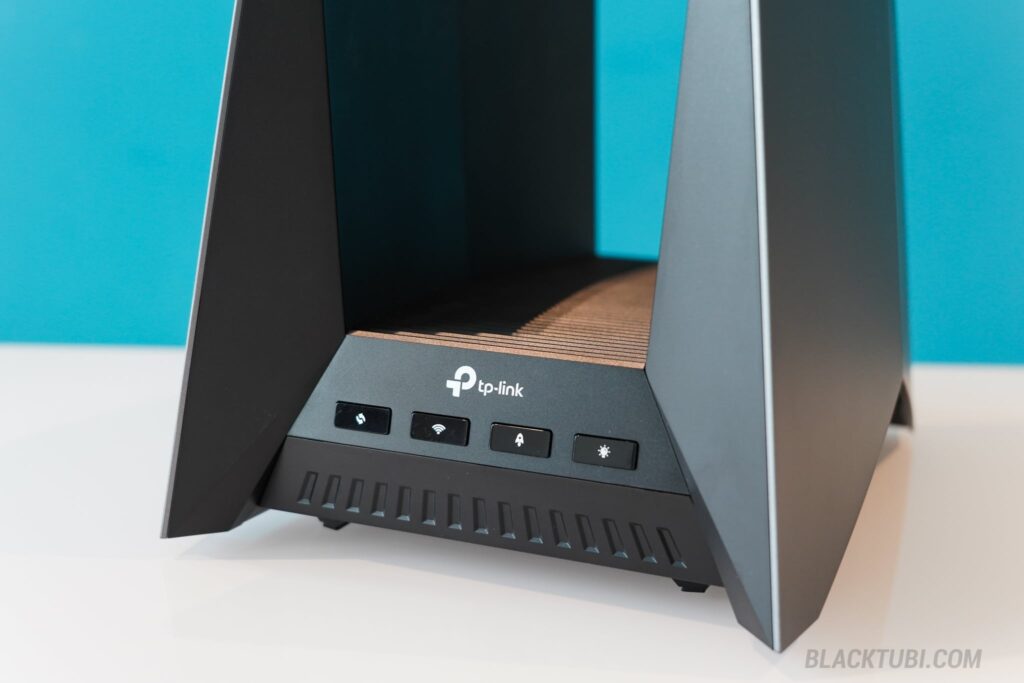
The Wi-Fi Performance of the Archer GE800 is excellent. While it’s a really fast router, I appreciate the stability more than the performance on a gaming router. This is where the Archer GE800 really excels as the Wi-Fi network is always fast and reliable. Some other Wi-Fi 7 routers that I’ve tested are plagued with annoying connectivity bugs and it’s not happening here.
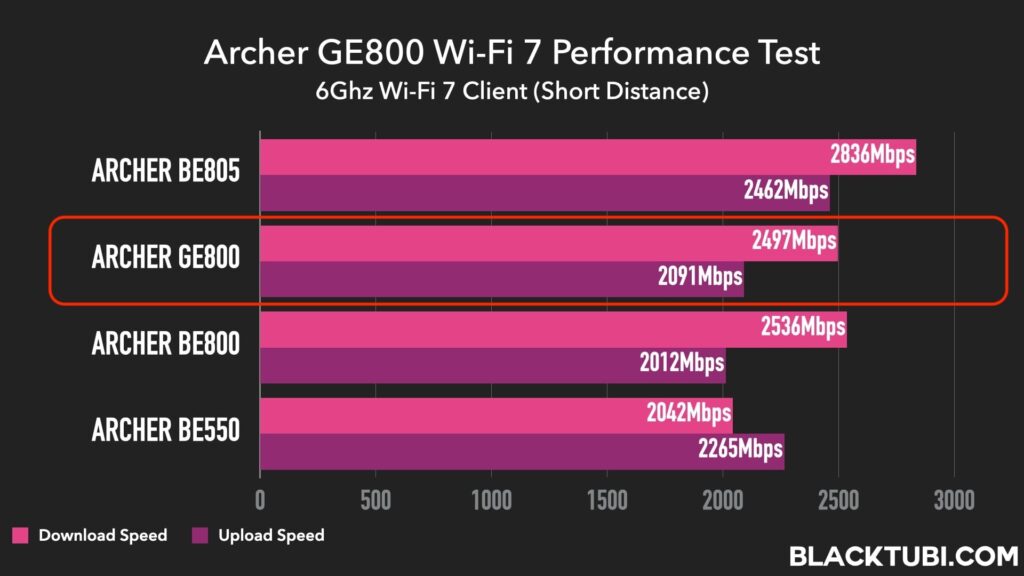
Performance of the 6GHz Wi-Fi 7 network is ridiculously fast which let me to obtain over 2500Mbps on my laptop with the Intel BE200 Wi-Fi 7 wireless adapter over a distance of 5 Meters. That’s even faster than a 2.5G Ethernet connection and this is all happening over a wireless connection! For gamers, this mean games will download or update quicker over a wireless connection.
For me, the best part of having such a fast Wi-Fi connection is mainly for files access over the network. I can now access files stored in my local NAS server at a really fast speed over wireless connection without having to connect the network cable. Of cource, those with a 2Gbps or 10Gbps will be able to take advantage of this performance upgrade on the Wi-Fi 7 network.
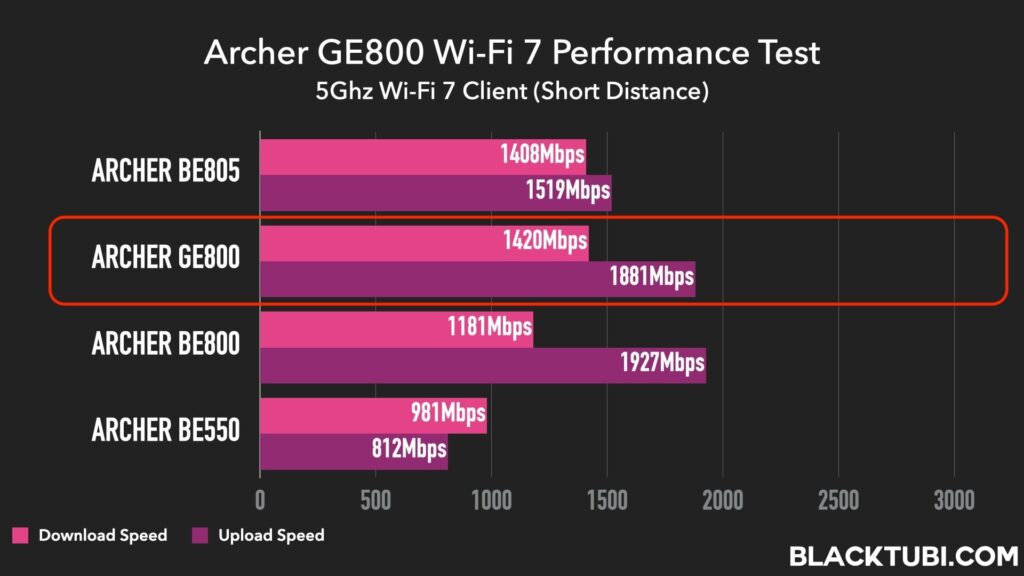
However, the signal strength of the 6GHz network is weaker than the 5GHz network. The 6Ghz network offers a much faster performance at an unfortunate cost of weaker signal penetration over walls. Hence, the 5GHz network remain as a really important aspect to consider on a wireless router.
The Archer GE800 support the new Wi-Fi 7 multi-link operation (MLO) feature right out of the box. This means the Wi-Fi devices is simultaneously connected to all 3 bands and can seamlessly combine or switch network without any interruption. This is a huge improvement over smart connect band steering in the past where it can only be connected to a single network at one time.
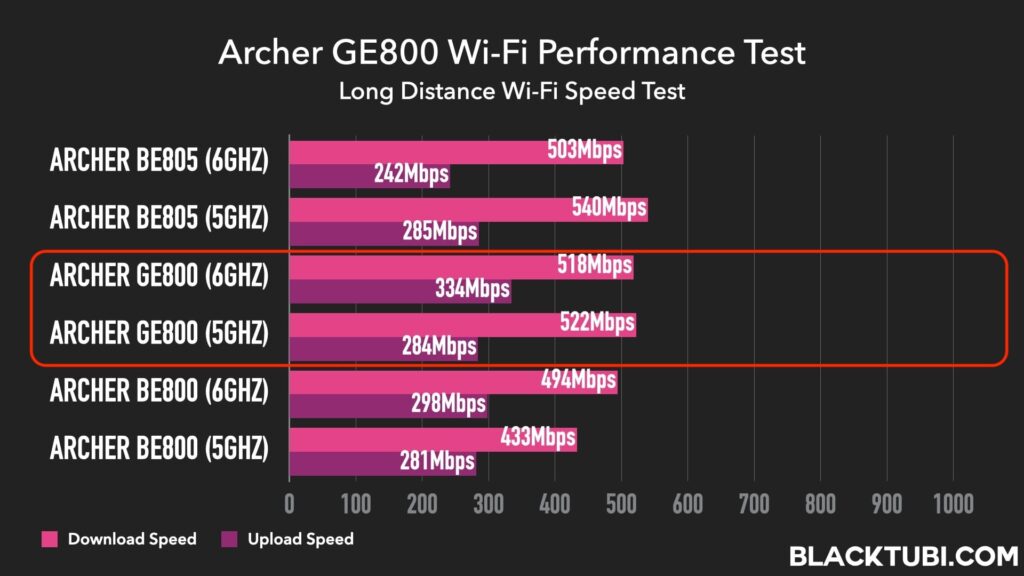
On the bright side, the performance of the 5GHz network on the Archer GE800 is excellent even when tested with my older Wi-Fi 6 device. There’s a slight improvement in range with faster Wi-Fi speed compared to the flagship Wi-Fi 6 router from TP-Link. This means the Archer GE800 will benefit older devices with excellent backwards compatibility to older Wi-Fi 6 or even Wi-Fi 5 devices.
Firmware and Features
The firmware on the Archer GE800 is also best-in-class with an excellent user interface. It’s a huge upgrade over the previous gaming routers from TP-Link with advanced features that actually work as promised. I prefer to use the Tether app as pretty much everything can be done on the user-friendly app without having to use the web interface.
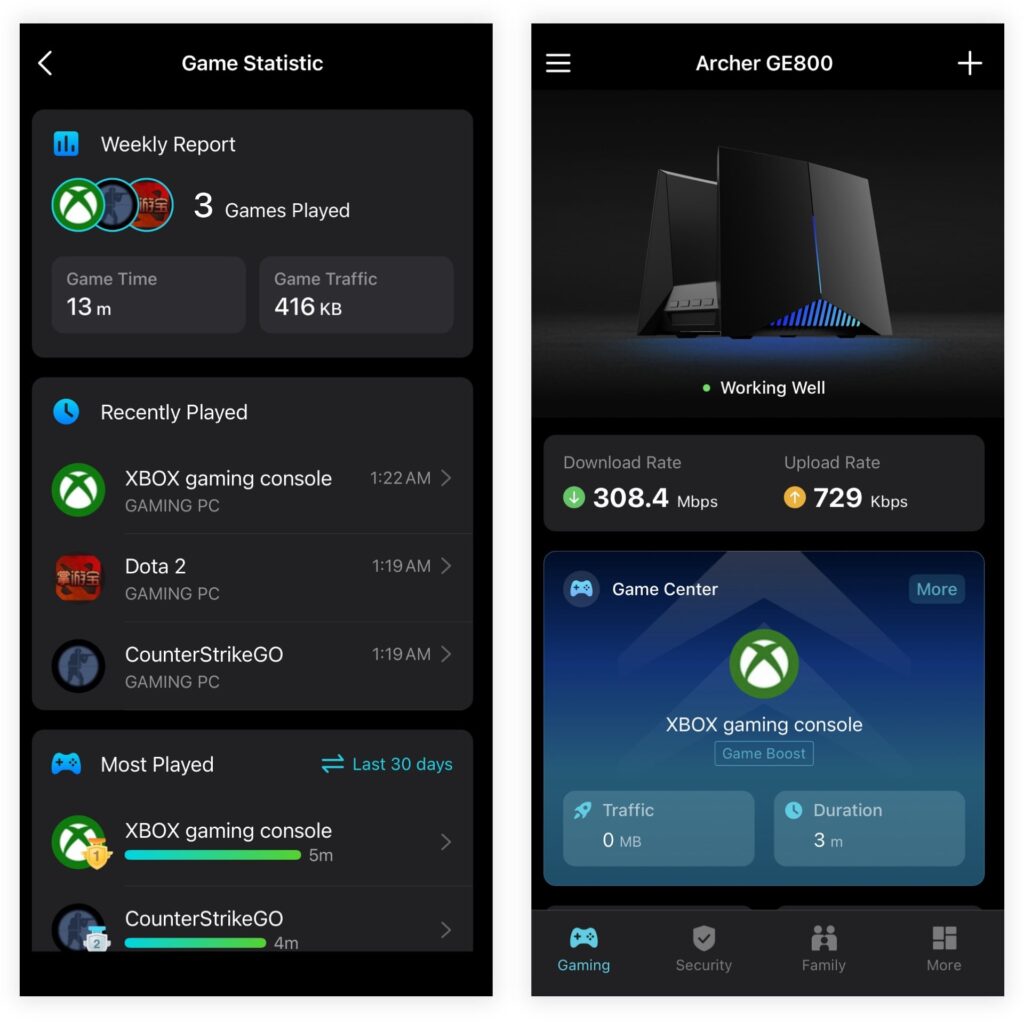
My favorite aspect on the Archer GE800 is the Tether app from TP-Link. It’s incredibly easy to use and really foolproof to operate. The star of the show is the gaming quad acceleration feature which is a combination of clever QoS prioritization and a gamers private network feature sort of a VPN for games with better routing than most typical Internet service providers.
For those gaming on foreign gaming servers which is prone to connectivity and routing issue, the included WTFast feature is designed to fix it. It will intelligently route gaming traffic through a specialized gaming VPN tunnel designed for lower latency than the typical Internet service provders. This might result in a much lower latency depending on good or hod bad is the routing of your service provider.
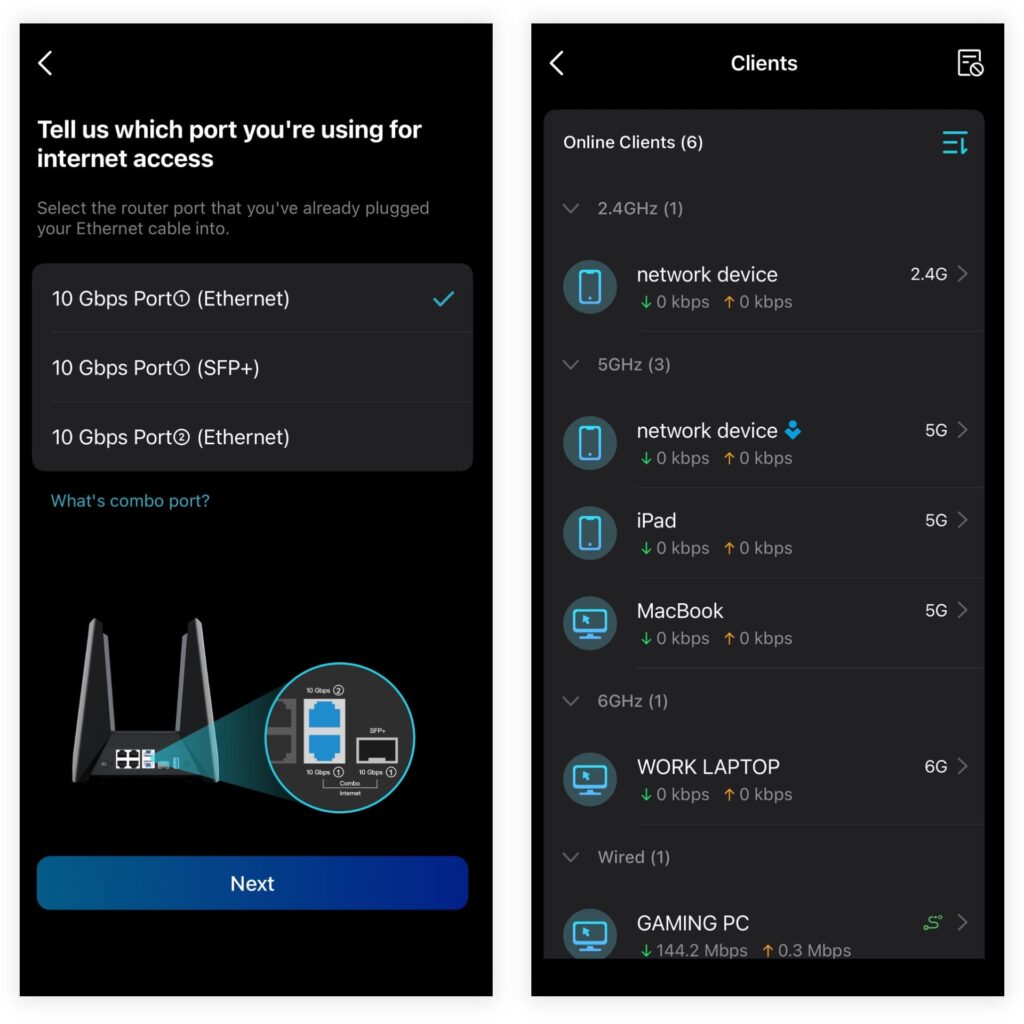
The app can detect which game you are playing and indicate that the router is already optimizing the network to prioritize performance for the game. This active game detection is the first in the industry and very well executed by TP-Link. It will even show a report where how much data is consumed by the game and how long you spent playing that particular game.
In fact, the game acceleration engine is working so well where I couldn’t even notice any hiccups even while gaming wirelessly on my gaming laptop. The QoS engine is really responsive at detecting the games and automatically prioritizing the game over other background services, preventing lag and ping spikes.
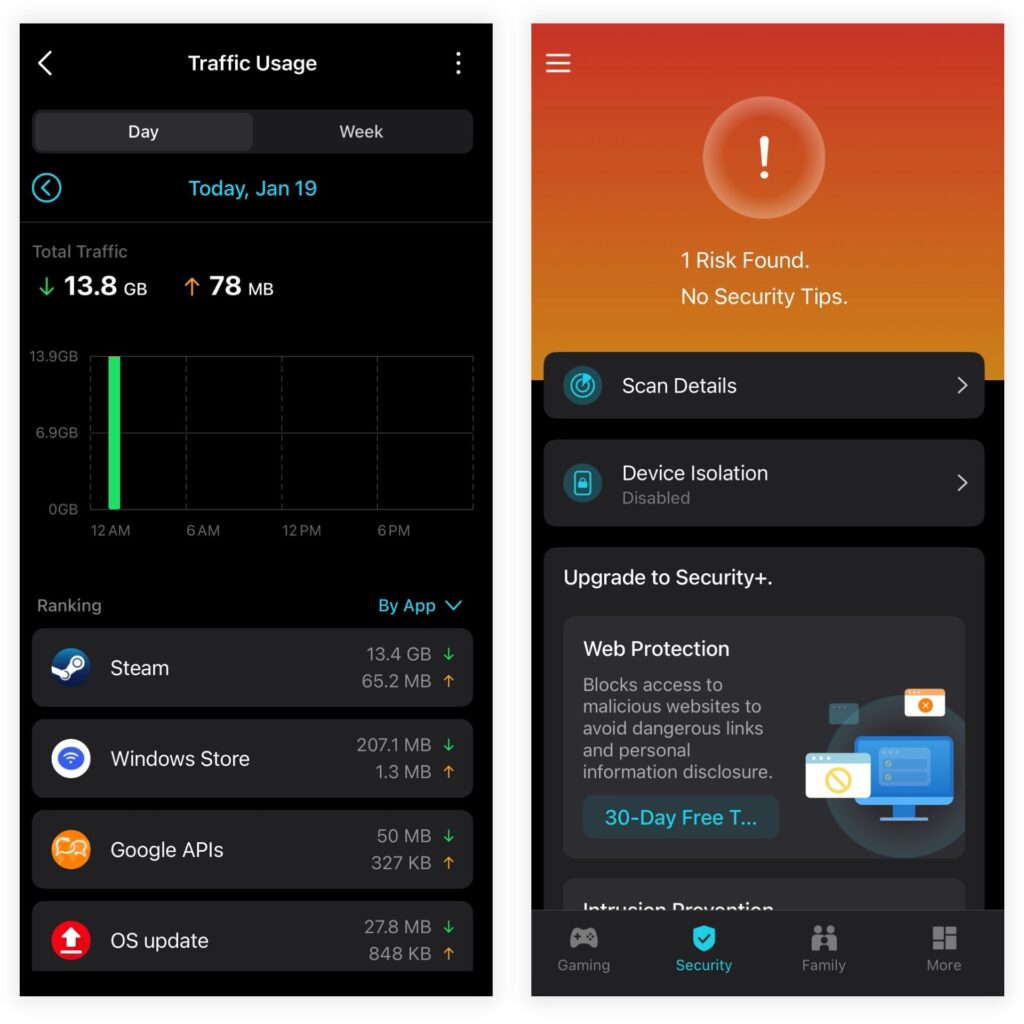
The rest of the firmware is pretty much TP-Link standard affair. It comes with the HomeShield Pro parental control feature which will require a subscription if you wish to use the advanced parental control feature. It comes with the usual feature you would expect from a wireless router and some additional features like EasyMesh or configuring a Wireguard or OpenVPN client directly on the router.
Closing Thoughts
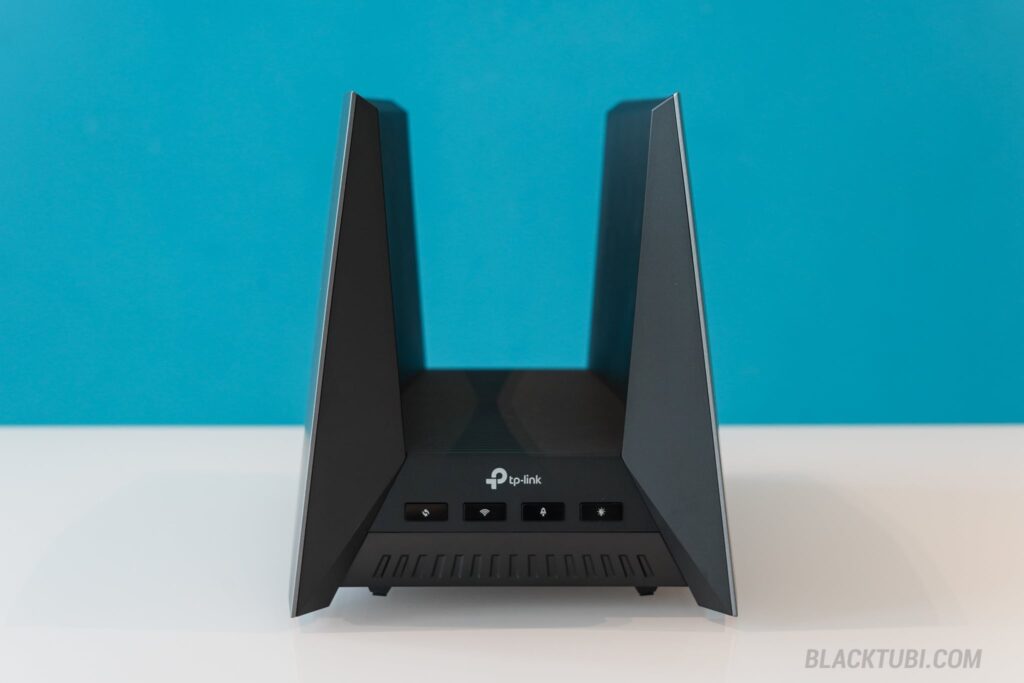
The Archer GE800 gaming router offered a powerful next-generation Wi-Fi 7 hardware and best-in-class software. For a gaming router, stability and performance is the most crucial aspect and the Archer GE800 delivers. The performance is is excellent with the powerful Qualcomm Quad-Core CPU combined with the high performance Wi-Fi 7 radio.
What’s more important is the software on the Archer GE800. Despite Wi-Fi 7 is a new technology, TP-Link did an excellent job at ironing out all the bugs and flaws before releasing it to the public. The brand new gaming acceleration features on the router work as advertised. It doens’t have any strange connectivity issues and all it does is consistent high performance that’s always avaialble the moment you need it.
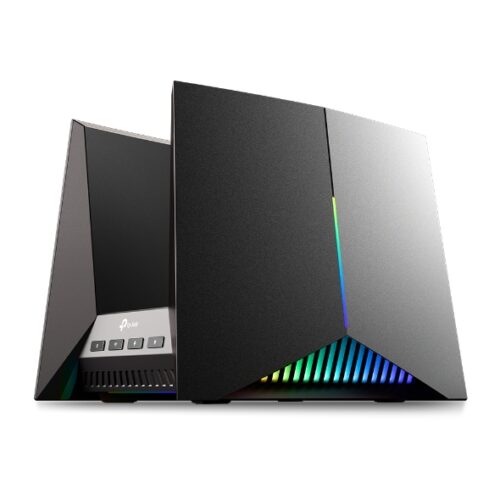
TP-Link Archer GE800
9.3
Tubi Rating
pros
- Fast and stable Wi-Fi 7 network even for older wireless devices
- Gaming acceleration feature that actually works really well
- Comes with SFP+ port and dual 10G Ethernet
cons
- Monthly subscription required for the advanced parental control feature

Hi, Ive been using this router for few months, its a great router, reliable, stable, backward compatible with older device. Its work great with games, auto detect any games you played, using phones/PS5 or any gaming device connected to GE800 WIFI/LAN. The price is reasonable compare to Asus, its come with 10G fiber ports, for me its a value for money, but not all services come free, we need to subscribe separately. Like antivirus, url web filter etc. If TP-Link add DNS service to this router it would be perfect , its comes only with ddns and need to setup… Read more »
Wonderful web site. Lots of useful info here. I’m sending it to a few friends ans additionally sharing in delicious. And obviously, thanks to your effort!
be805 vs be85 vs asus be98
what u propose for speed and coverage.
Never compared them directly but obviously the Deco BE85 is a twin pack hence you get more coverage than a single unit.
hello can i ask which one would you recommend between TP LINK BE805 and GE800 ? (for wireless and gaming)
The Archer GE800 have better overall performance.
can i ask is it good to get Archer GE800 if my internet speed only 500mbps ? or i need to upgrade my plan to 1gb first before get the router ? thanks for the reply
There’s no harm to get a better router, it will let you to obtain a good WiFi speed even when you have a weaker signal.
Sooo, any thoughts on the SFP+ port? For Unifi 2Gbps Ultra users specifically. That port will help eliminate one more device and give better speed than default Unifi ‘aggregated’ speed. Thanks BT
TM will be giving proper 2.5G capable ONU soon and I think that is a superior solution than using SFP+. TM does not release their GPON implementation details, hence, using SFP+ GPON module will require reverse engineering and TM might block it in the future as well.
TP LINK BE85 or this one better ?
I would always prefer a proper mesh WiFi system these days as a single router can never provide enough high speed coverage. Though the gaming acceleration features on the Archer GE800 is excellent.
My question is, where did you get this router? I’ve been looking everywhere and can only find it available in Australia. Is this available in the US yet?
I believe it will be available for purchase in the US soon. I got mine in Malaysia.
Great review, want to ask the SFP+ port can use for Unifi 1GbpS user? Feel like want upgrade to this router.
Yes you can and you will have to look around for the solution. It’s not easy.